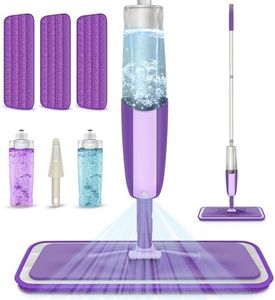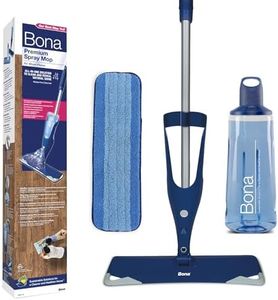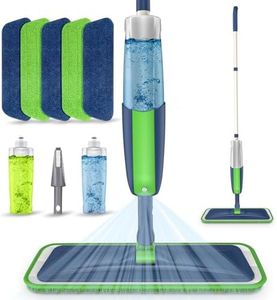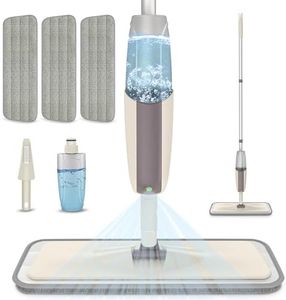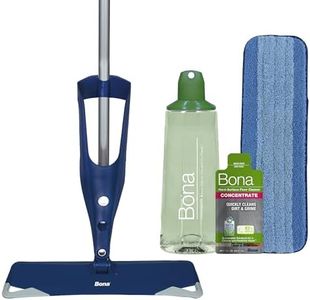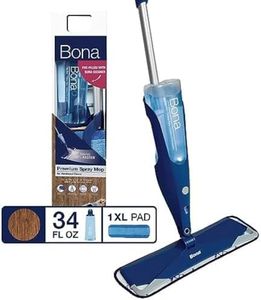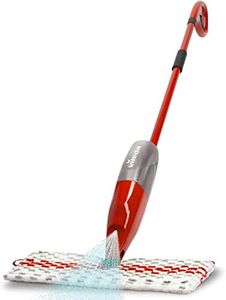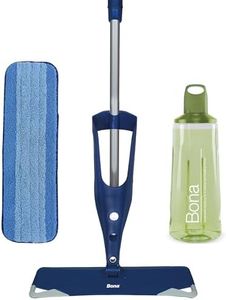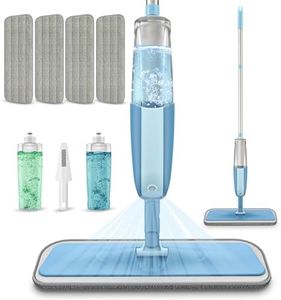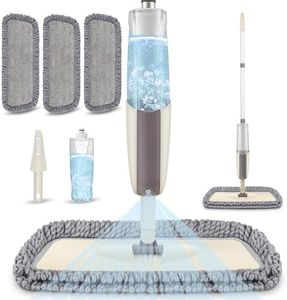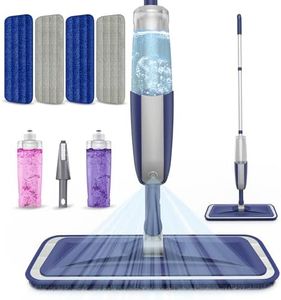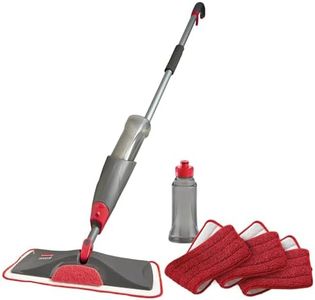We Use CookiesWe use cookies to enhance the security, performance,
functionality and for analytical and promotional activities. By continuing to browse this site you
are agreeing to our privacy policy
10 Best Spray Mops
From leading brands and best sellers available on the web.By clicking on a link to a third party's website, log data is shared with that third party.
Buying Guide for the Best Spray Mops
Spray mops are a popular cleaning tool that makes mopping faster, easier, and less messy. Unlike traditional mops, they come with a built-in spray mechanism to release cleaning solution directly in front of the mop head as you clean. Picking the right spray mop means considering key features that affect cleaning performance and ease of use. Understanding your specific cleaning needs, such as the size of your space and your preferred cleaning routine, will help guide you toward the ideal spray mop for you.Water Tank CapacityWater tank capacity in a spray mop refers to how much cleaning solution or water the mop can hold at once. This affects how long you can clean before needing a refill. Small tanks usually hold around 300 ml, which is handy for small apartments or quick touch-ups since they keep the mop light. Medium tanks range from 400-600 ml and offer a balance for everyday cleaning in average-sized homes. Large tanks (700 ml and above) are better for big or multi-room areas. When choosing, think about how large your cleaning area is and how often you want to stop and refill; for bigger spaces, a larger tank saves time, while for smaller areas, a lighter, smaller tank may be easier to handle.
Spray MechanismThe spray mechanism is what dispenses the liquid from the mop tank to the floor. There are two main types: manual (trigger operated) and battery powered (automatic). Manual triggers are reliable and don’t need batteries, but require you to squeeze a lever each time you spray. Battery-powered versions do the spraying automatically with a button press, often delivering a more consistent spray, but they'll need regular battery replacements or recharging. Choose manual if you prefer simplicity and no hassle with battery changes, or go automatic if you want effortless, uniform spraying and don't mind occasional battery upkeep.
Mop Head Material and SizeThe mop head is the part that actually contacts the floor; its size and material determine cleaning effectiveness and coverage. Common mop head materials include microfiber, which is excellent at trapping dust and grime, and may come in flat or pad designs. A smaller mop head (about 12 inches or less) is easier to maneuver around furniture and in narrow spaces, making it a good fit for apartments or homes with lots of obstacles. Larger heads (up to 16 inches or more) can clean bigger, open areas faster but might be harder to use in tight spaces. Pick a size that matches your home's layout and cleaning preferences, and check if the pads are machine washable for easier maintenance.
Refillable vs. Proprietary TanksSome spray mops have tanks that allow you to add any cleaning solution or even plain water, while others require you to buy specially branded refills. Refillable tanks give you the freedom to use your favorite cleaner or just water, which can be more economical and eco-friendly. Proprietary tanks or cartridges are easy to use but can cost more over time and may limit you to certain cleaning chemicals. If you want flexibility and potentially lower long-term costs, look for a spray mop with a refillable tank.
Handle Design and WeightThe handle and overall weight of the spray mop affect comfort during use. Ergonomic handles are designed to reduce hand fatigue and often come with rubberized grips for safety. Lighter mops (under 2 kg) are easier to carry and use for longer periods, making them ideal for frequent quick cleanups or for people who may have wrist or arm strength concerns. Heavier mops may offer more downward cleaning pressure but could be tiresome for extended use. Consider how much time you plan to spend cleaning and whether you prefer a lightweight, easy-to-maneuver mop or don’t mind a little extra heft for possibly tougher scrubbing.

